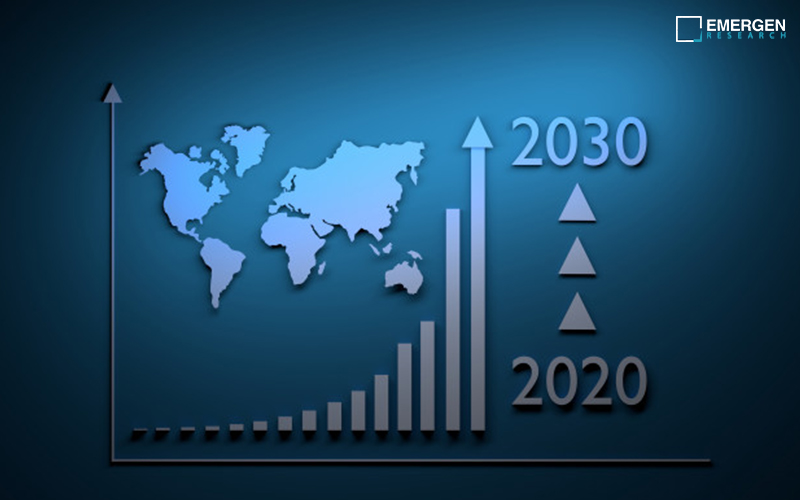The culinary world is buzzing with energy, not just in the kitchen. As restaurants and food establishments strive to balance quality with sustainability, energy-efficient Commercial cooking equipment has emerged as a game-changer. These innovative tools do more than prepare delicious meals; they also help businesses save on operational costs while reducing their environmental footprint.
Imagine serving mouthwatering dishes without worrying about skyrocketing utility bills or excessive power consumption. Energy-efficient equipment can make that dream a reality for chefs, restaurant owners, and catering professionals. With an increasing emphasis on green practices in the food industry, now is the perfect time to explore how these advancements are transforming kitchens around the globe. Let’s dive into the essential elements of energy efficiency in commercial cooking and discover how you can benefit from this switch!
The Importance of Energy Efficiency in the Food Industry
Energy efficiency plays a crucial role in the food industry. As restaurants and commercial kitchens operate extended hours, energy consumption can skyrocket. This leads to inflated utility bills that strain budgets. Adopting energy-efficient practices not only cuts costs but also promotes sustainability. With rising awareness about environmental impacts, customers increasingly favour eco-conscious businesses.
Moreover, regulatory pressures are mounting as governments push for greener operations. Meeting these standards can prevent fines and enhance your brand’s reputation. Investing in efficient equipment often results in less maintenance and longer lifespans, giving businesses peace of mind. By minimizing wasteful energy, establishments can redirect funds towards improving food quality or customer experience.
In an era where every penny counts, embracing energy efficiency is more than just a trend—it is necessary to thrive in today’s competitive landscape.
Types of Energy-Efficient Commercial cooking-equipment
Energy-efficient Commercial cooking-equipment comes in various forms, each designed to reduce power consumption while maintaining performance.
- Induction cooktops are gaining popularity due to their precise heating capabilities and faster cooking times. They use magnetic fields to heat pots directly, minimizing wasted energy.
- Convection ovens circulate hot air for even cooking, ensuring food is prepared quickly and uniformly without overheating the kitchen.
- Steamers provide a healthier alternative to traditional cooking methods. They use steam to save energy and preserve nutrients better.
- In addition, high-efficiency fryers consume less oil and require lower temperatures to achieve crispy results.
Energy-smart dishwashers utilize advanced technology that reduces water usage while effectively cleaning utensils. Each piece of equipment contributes uniquely to an overall sustainable kitchen environment.
Benefits Of Using Commercial Kitchen Equipment
Switching to energy-efficient equipment can significantly reduce your utility bills. Lower energy consumption translates directly to savings that can be reinvested into other areas of your business.
- Cost Savings: The most obvious benefit of using energy-efficient Commercial kitchen equipment is its cost savings. Reducing your energy consumption can lower your utility bills and save money in the long run. This extra cash can be reinvested into other business areas, such as marketing, employee training, or product development.
- Environmental Benefits: Energy-efficient equipment helps to reduce greenhouse gas emissions and combat climate change. By using less energy, businesses can help to preserve natural resources and protect the environment for future generations.
- Improved Efficiency: Energy-efficient equipment is designed to operate more efficiently than traditional equipment. This means it can perform the same tasks using less energy, increasing productivity and cost savings for your business.
- Longer Lifespan: Energy-efficient equipment is often built with high-quality materials and advanced technology, which can increase its lifespan compared to traditional equipment. This means that you won’t have to replace your equipment as often, saving you money in the long run.
- Tax Incentives: Many governments offer tax incentives for businesses that use energy-efficient equipment. These incentives can offset the initial cost of purchasing energy-efficient equipment and make it a more affordable option.
Operating with advanced technology often means improved performance. Energy-efficient equipment typically offers faster cooking times and better temperature control, boosting kitchen productivity. Many of these appliances have cutting-edge features that simplify operations and improve safety. This leads to a more organized workspace where employees can focus on delivering quality service without unnecessary distractions or hazards.
Tips For Choosing The Right Commercial Kitchen Supplies
Selecting the right Commercial kitchen supplies involves more than just checking labels. Start by assessing your menu and kitchen layout. This will help you identify essential appliances that cater to your specific needs.
Next, consider each piece of equipment’s energy performance rating. Look for certifications like ENERGY STAR, which indicate higher efficiency standards.
It’s also wise to evaluate the long-term cost savings versus initial investments. Sometimes, a pricier unit pays off through lower utility bills over time.
Remember maintenance requirements. Equipment requiring less upkeep can save on labor and repair costs in the future.
Consult with suppliers or industry experts who understand current trends and innovations in energy efficiency. Their insights can guide you toward optimal choices tailored to your business model.
Case Studies: Success Stories of Businesses Who Have Made the Switch
One notable example is a bustling café in Austin that upgraded to energy-efficient ovens and griddles. Within six months, they reported a 30% reduction in their utility bill. Customers appreciated the faster cooking times, allowing quicker service during peak hours.
Another story comes from a pizzeria in Chicago. By investing in an energy-efficient pizza oven, they cut down on gas consumption and improved the quality of their pizzas with more consistent baking temperatures. Their sales increased as word spread about both taste and sustainability efforts.
A bakery on the West Coast switched to LED lighting and high-efficiency refrigeration units. This change led to significant savings reinvested into sourcing organic ingredients, attracting new customers who prioritize eco-friendly practices.
These examples demonstrate how strategic investments can enhance operations while promoting sustainability within the food industry.
Additional Ways to Reduce Costs and Save Power in Your Kitchen
Optimizing your kitchen layout can significantly reduce energy waste. Ensure that appliances are strategically placed for maximum efficiency and workflow.
Regular maintenance on all equipment is key. Scheduled checks can prevent unexpected breakdowns and maintain optimal performance, saving you money in the long run.
Consider installing programmable thermostats to regulate temperature effectively during peak hours. This will not only enhance comfort but also minimize energy consumption when the kitchen is less active.
Utilize LED lighting instead of traditional bulbs. LEDs consume less power and have a longer lifespan, reducing replacement costs over time.
Educate staff about energy-saving practices. Simple habits like turning off unused appliances or using lids on pots while cooking can lead to noticeable savings on utility bills each month.
Commercial cooking-equipment for Pizzerias, Cafes, and Bakeries
Choosing the right Commercial cooking-equipment is essential when outfitting a pizzeria, cafe, or bakery. Each type of establishment has unique demands that can influence efficiency and customer satisfaction. For pizzerias, high-performance pizza ovens are crucial. Options like deck ovens and conveyor belt models ensure even baking at higher temperatures, resulting in perfectly cooked pizzas every time.
Cafes often require versatility in their equipment. Commercial griddles and fryers allow for an array of breakfast items, while espresso machines elevate coffee service to new heights. Bakeries benefit from specialized tools such as proofing cabinets and spiral mixers. These pieces streamline the baking process and enhance product quality by providing consistent results.
Investing in energy-efficient alternatives across all these categories means lower utility bills without sacrificing performance or flavour.
Affordable Catering Equipment Supplier For Start-Up Restaurants
Starting a new restaurant can be thrilling, but managing costs is essential. Affordable Catering equipment supplier plays a critical role in your budget.
- Look for versatile appliances that can handle multiple tasks. For instance, a combination oven can bake, roast, and steam—maximizing utility without breaking the bank.
- Consider buying used or refurbished equipment. Many suppliers offer quality items at significantly lower prices, allowing you to allocate more funds toward other essentials like décor or staff training.
- Research energy-efficient models, too. While they may have higher upfront costs, utility savings will add up quickly over time.
- Don’t overlook local suppliers; they often provide competitive pricing and personalized service tailored to start-ups. Building relationships with vendors can also lead to better deals later on.
Focus on what you need rather than what’s trendy. Keeping it simple ensures you stay within budget while still delivering excellent food and service.
Conclusion
The benefits extend beyond cost savings. They contribute to sustainability, helping reduce the overall carbon footprint of your operations. With so many options, finding the right fit can elevate your kitchen’s performance and efficiency. Each piece of Commercial cooking equipment plays its part in creating an environment that’s economically sound and environmentally friendly. As you weigh your choices, consider both immediate needs and long-term goals. Investing wisely today paves the way for a brighter tomorrow filled with innovation and responsibility within the culinary world. Every step towards energy efficiency enhances profits, community well-being, and environmental health.
FAQS
1. How much can I save by switching to energy-efficient equipment?
The savings can be significant, often amounting to hundreds or even thousands of dollars annually. Energy-efficient models use less power without sacrificing performance, leading to lower utility bills over time.
2. Is energy-efficient Commercial cooking equipment more expensive initially?
While the upfront cost may be higher for some models, the long-term savings on energy costs typically offset Commercial cooking equipment initial investment. Additionally, many states offer rebates and incentives for purchasing eco-friendly appliances.
3. Are there specific brands known for their energy efficiency in commercial cooking gear?
Yes! Several manufacturers specialize in creating highly efficient options across various cooking appliance categories—from ovens and fryers to dishwashers and refrigeration units. Researching brand reputation and user reviews can help narrow down your choices. Choosing the right equipment is an important step toward saving money and contributing positively to environmental sustainability efforts within the food industry.
| Related Business Listings |
| Contact Directory |
| Local Business Profiles |




